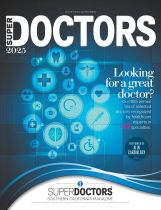National Institutes of Health (NIH)
5/28/2024
NIH study finds protection lasts no matter how often kids eat peanut in later childhoold.
Feeding children peanut products regularly from infancy to age 5 years reduced the rate of peanut allergy in adolescence by 71%, even when the children ate or avoided peanut products as desired for many years. These new findings, from a study sponsored and co-funded by the National Institutes of Health’s National Institute of Allergy and Infectious Diseases (NIAID), provide conclusive evidence that achieving long-term prevention of peanut allergy is possible through early allergen consumption. The results were published today in the journal NEJM Evidence.
“Today’s findings should reinforce parents’ and caregivers’ confidence that feeding their young children peanut products beginning in infancy according to established guidelines can provide lasting protection from peanut allergy,” said NIAID Director Jeanne Marrazzo, M.D., M.P.H. “If widely implemented, this safe, simple strategy could prevent tens of thousands of cases of peanut allergy among the 3.6 million children born in the United States each year.”
The new research findings come from the LEAP-Trio study, which builds on the seminal results of the Learning Early About Peanut Allergy (LEAP) clinical trial and the subsequent LEAP-On study, both sponsored and co-funded by NIAID.
During the LEAP trial, half of the participants regularly consumed peanut products from infancy until age 5 years, while the other half avoided peanut during that period. Researchers found that early introduction of peanut products reduced the risk of peanut allergy at age 5 by 81%. Subsequently, children from LEAP who participated in LEAP-On were asked to avoid eating peanut products from ages 5 to 6 years. Investigators found that most children from the original peanut-consumption group remained protected from peanut allergy at age 6.
The LEAP investigators designed the LEAP-Trio study to test whether the protection gained from early consumption of peanut products would last into adolescence if the children could choose to eat peanut products in whatever amount and frequency they wanted. Those children who were allergic to peanut at age 6 were advised to continue avoiding it.
The study team enrolled 508 of the original 640 LEAP trial participants—nearly 80%—into the LEAP-Trio study. The children averaged 13 years of age at enrollment. Two hundred and fifty-five participants had been in the LEAP peanut-consumption group and 253 in the LEAP peanut-avoidance group.
The LEAP-Trio study team assessed the adolescents for peanut allergy primarily through an oral food challenge. This involved giving participants gradually increasing amounts of peanut in a carefully controlled setting to determine if they could safely consume at least 5 grams of peanut, the equivalent of more than 20 peanuts. The study team also surveyed participants about their recent patterns of peanut consumption and verified the self-reports through measurements of peanut in dust from participants’ beds, a technique previously validated by LEAP investigators.
The LEAP-Trio investigators found that 15.4% of participants from the early childhood peanut-avoidance group and 4.4% from the early childhood peanut-consumption group had peanut allergy at age 12 or older. These percentages reflected 38 of 246 participants from the peanut-avoidance group and 11 of 251 from the peanut-consumption group. (Complete data was unavailable for 11 of the 508 participants enrolled.) These results showed that regular, early peanut consumption reduced the risk of peanut allergy in adolescence by 71% compared to early peanut avoidance.
The researchers also found that although participants in the LEAP peanut-consumption group ate more peanut products throughout childhood than the other participants overall, the frequency and amount of peanut consumed varied widely in both groups and included periods of not eating peanut products. This demonstrated that the protective effect of early peanut consumption lasted without the need to eat peanut products consistently throughout childhood and early adolescence.
For detailed advice on how to safety introduce peanut into an infant’s diet, consult the Addendum Guidelines for the Prevention of Peanut Allergy in the United States.
The NIAID-funded Immune Tolerance Network (ITN)(link is external) conducted LEAP, LEAP-On and LEAP-Trio under the leadership of Gideon Lack, M.D. Dr. Lack is a professor of pediatric allergy at King's College London and head of the Children's Allergy Clinical Academic Group in the KHP Institute of Women and Children's Health at Evelina London.
Additional information about the LEAP-Trio study is available at ClinicalTrials.gov under study identifier NCT03546413.
NIH, NIAID funded the study under grant numbers UM1AI109565, UM2AI117870, and U01AI178772. The National Peanut Board, Atlanta, and The Davis Foundation, London, co-funded the trial.
NIAID conducts and supports research—at NIH, throughout the United States, and worldwide—to study the causes of infectious and immune-mediated diseases, and to develop better means of preventing, diagnosing and treating these illnesses. News releases, fact sheets and other NIAID-related materials are available on the NIAID website.
About the National Institutes of Health (NIH): NIH, the nation's medical research agency, includes 27 Institutes and Centers and is a component of the U.S. Department of Health and Human Services. NIH is the primary federal agency conducting and supporting basic, clinical, and translational medical research, and is investigating the causes, treatments, and cures for both common and rare diseases. For more information about NIH and its programs, visit www.nih.gov.
NIH…Turning Discovery Into Health®

